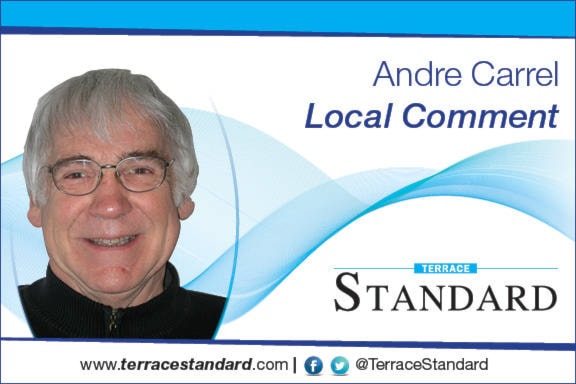The conflict fueling the protests triggered by the LNG project lies in the difference between a circle and a straight line. Indigenous cultures everywhere – the Americas, Africa, Australia – understand economic life as a circle while the dominant global cultures see the economy as an upwardly trending straight line.
To the world’s dominant cultures, a healthy economy is one that adheres to free market principles, forever inching upward, driven by demand: more production, more consumption, more growth, and more profits. The elements of any economy are labour, land, and money.
However, as economist and social philosopher Karl Polanyi argued in The Great Transformation (1944), labour, land, and money are not commodities. Land is not produced by man; land, including air, water, and all resources, is but another word for the planet. There is but one planet and no economy can add to or expand what there is. The market economy is blind to that fact.
Nobel laureate George Wald reminded us in his 1970 CBC Massey Lecture that “99 per cent of the living substance of all living organisms we know are made of [hydrogen, carbon, nitrogen, and oxygen].” All life forms, be that my grandchildren or the apple trees in my backyard, are, in the words of George Wald, composed of “those four elements bound together in molecules.”
The circle, symbol of the economy embraced by Indigenous cultures, reflects Polanyi’s and Wald’s teachings. The life cycle of a salmon, from egg in a creek to steak on a barbecue, or that of a spruce tree from sprout to ember, is a process of rearranging molecules consisting of hydrogen, carbon, nitrogen and oxygen.
Historically, cultures that acknowledged life’s circular nature and managed their economy subject to the circular laws of nature and life have survived for millennia. The economic principles at the heart of their cultures were documented in their traditions. The first priority pursued by colonizing powers everywhere has always been to suffocate Indigenous cultures and their economies by any means.
As Polanyi noted, the market economy perceives the economy not as an integral part of life, but as an adjunct to life in an endless hunt for more. The market economy’s magic word is efficiency: catch more fish with less effort, travel greater distances in less time, all for the ultimate goal of accumulating more profits. The idea of “enough” is an anathema to a market economy.
The dominant culture’s philosophers and scientists recognize that the world’s resources, from the air we breathe and the water we drink to the precious metals we use to manufacture our electronic gadgets and plastic stuff are limited. We have yet to discover all the treasures hidden under the world’s surface, but what is there is all there is. The focus of too many economic theorists and ideologues is on mining the last ounce of gold and the last drop of oil, not on what to do once humanity has reached that point. Too many of the politicians we elect, in tandem with the autocrats who grab and hold on to power by force, are enraptured by the linear economy’s promise of more for less.
What stands between the people facing each other at the Wet’suwet’en barricade is not a question of the rule of law; it is a gulf separating two economic principles: that of the circle and that of the straight line.
